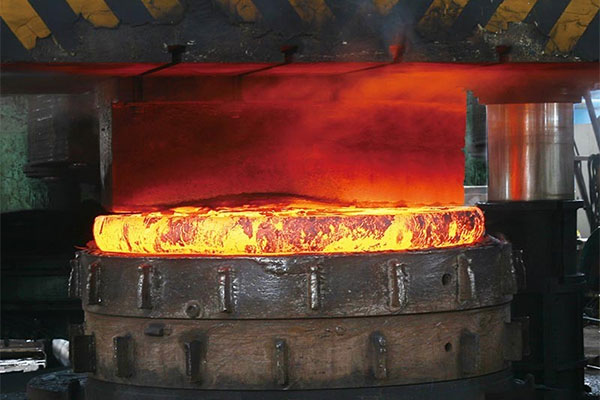Forging quality classification
The review of forging quality problems is a very complicated and extensive work, which can be described according to the cause of defects, the responsibility of defects, and the location of defects, so it is necessary to classify them.
(1) According to the process or production process of producing defects, there are quality defects in the material preparation process, quality defects in forging process and quality defects in heat treatment process.
1) Defects caused by raw materials. (1) Defects of forgings caused by raw materials: cracks, cracks, shrinkage holes, loose, impurities, segregation, scarring, bubbles, slag inclusion, sand holes, folds, scratches, non-metallic inclusions, white spots and other defects; (2) Longitudinal or transverse cracks, interlayers and other defects caused by raw material defects during forging; (3) There are problems in the chemical composition of raw materials.
2) Defects caused by blanking include: rough end surface, tilt end surface and insufficient length, end crack, end burr and interlayer, etc.
3) Defects caused by heating include cracking, oxidation and decarburization, overheating, over-burning and uneven heating, etc.
4) Defects in forging include cracks, folds, end pits, insufficient size and shape, and surface defects, etc.
5) Defects caused by cooling and heat treatment after forging include: crack and white spot, deformation, hardness discrepancy or coarse grain, etc.
(2) According to the liability for defects
1) Quality related to forging process and tooling design -- design quality (rationality of forging design). Before being put into production, engineers and technicians shall convert product drawings into forging drawings, make process plans, design tooling and debug the production. All production techniques are ready before they can be transferred to formal production. Among them, the design quality of process and tooling as well as the commissioning quality of tooling directly affects the forging quality.
2) Quality related to forging management -- management quality. Forging quality defect caused by equipment bad condition and process connection problem. Every link in forging production process may affect forging quality factors. Therefore, it is necessary to control all production links from the selection of raw materials to the post-forging heat treatment to ensure the production quality and product quality.
3) Quality related to forging manufacturing process -- manufacturing quality. Forging quality defect caused by non-conforming operation or weak responsibility of operator.
4) Quality related to forging inspection process -- inspection quality. Inspection personnel should carry out strict and meticulous inspection to prevent missing inspection.
(3) According to the location of defects, there are external defects, internal defects and surface defects.
1) Dimension and weight deviation: (1) The cutting margin should be kept as small as possible under the premise of ensuring the forging can be processed into qualified parts; (2) Dimension, shape and position accuracy, refers to the forgings external dimensions and shape and position allowed deviation; Weight deviation.
2) Intrinsic quality: requirements on the metallographic structure, strength or hardness of the forgings after heat treatment (although some forgings do not undergo heat treatment, but there are also inherent quality requirements), as well as provisions on other potential quality defects.
3) Surface quality: refers to the surface defects, surface cleaning quality and anti-rust treatment of forging pieces.
from:168 forging
